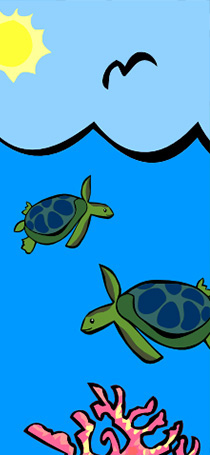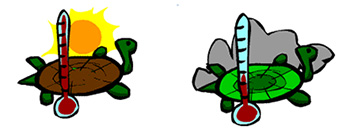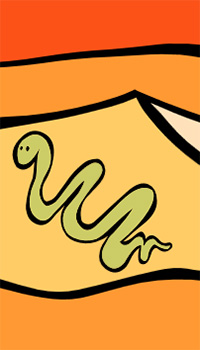Where do Reptiles live?
Reptiles live in a wide variety of habitats all over the world!
They may live in terrestrial, freshwater and marine habitats. That could be the land, trees, water, underground tunnels, deserts, grasslands, the ocean, swamps and freshwater.
There are some reptiles that live both in the land and the water, like some turtles, snakes and lizards. Some live only on the land, like tortoises. Alligators and crocodiles live mostly in the water, but take short trips on land.
Sea turtles live in the ocean, but even they come up onto the land to lay their eggs, and require air to breathe. Most turtles live around and in water, both saltwater like the oceans and freshwater like ponds and streams, but they spend some time on land.
They are cold-blooded, which means they have to seek out warmth from the sun to help balance their body temperature, so most of these animals live where it's warm. You may have seen a lizard or turtle sitting on a sun-warmed rock, to help warm up their blood.

Some reptiles (for instance lizards, snakes, and turtles), that live in places with cold winters do something similar to hibernation in the winter - they conserve energy through a process called "brumation". Brumation means they slow their metabolism and use their energy very slowly by limiting their movement. This could mean a snake or turtlejust finding a safe place to just rest and wait - still and quiet, during very cold temperatures. Their metabolism could be so slow that they don't need to eat during the very cold temperatures (however they do eat and nourish their bodies in the  summer to prepare for brumation). If there is a sunny, warm winter day, then they might become active - move somewhere to sit in the sun, drink or eat occasionally, but will return to brumating before it gets too cold again. Brumation typically lasts 3 to 6 months. summer to prepare for brumation). If there is a sunny, warm winter day, then they might become active - move somewhere to sit in the sun, drink or eat occasionally, but will return to brumating before it gets too cold again. Brumation typically lasts 3 to 6 months.
Reptiles have special adaptations depending on where they live. The turtle and tortoise jaws are beak-shaped, which helps making eating plants easier. Some desert reptiles can tolerate quite high temperatures, or they spend time in underground burrows to protect themselves.
Some reptiles - for instance some crocodiles and tortoises in very hot and dry climates might have to do something more during the extremely hot season of summer. They enter a process similar to brumation, except this is during hot and dry weather - called "estivation" - also known as "summer dormancy". This means it's so hot and dry, these reptiles will try to find a safe, shady and sheltered spot, or burrow underground. Then they enter estivation - they reduce their activity and metabolism to conserve energy and also to protect themselves from dehydration due to the lack of water. That's pretty amazing!
Estivation can last from a day to a few months.
|